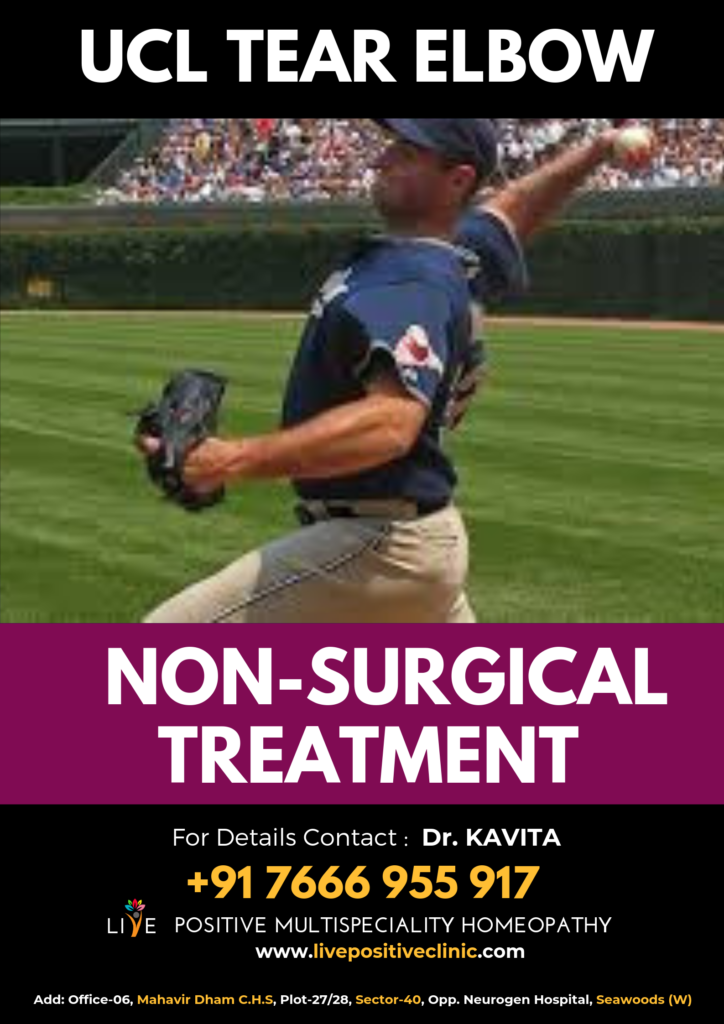UCL Tear Elbow
UCL tear elbow refers to tear or laceration of the Ulnar Collateral Ligament (UCL). It is also known commonly as Tommy John injury of the elbow.
It usually occurs by repeated stress posed from overhead movements. In most of the cases, the UCL tear of the elbow occurs slowly. However, it may also occur in just one traumatic event.
To understand UCL tear elbow better, you first need to understand what UCL ligament of elbow is.
What Is UCL Ligament?
The UCL ligament lies at the inner side of the elbow. It is connected to the humerus bone on one side, while on the other side it is connected to the ulna. The UCL has three bands namely anterior or front, posterior or back, and transverse or across.
The anterior band provides stability to the elbow. This UCL structure holds the elbow bones together. It helps in the smooth movement of the elbow joint. UCL acts as a rope that connects bones of the elbow joint.
People at Risk of UCL Tear Elbow
UCL tear of the elbow is common in games involving overhead movements. Commonest examples are basketball, baseball, cricket, volleyball and wrestling. Activities involving overhead weight lifting also cause UCL elbow tear. Exercises involving overhead movements of arms can also tear the UCL of the elbow.
How Does UCL Tear of Elbow Occur?
The UCL of the elbow can tear in many ways. Usually it occurs via consistent stress on a ligament or a single traumatic event involving great overhead stress such as the lifting of heavyweights.

Causes in Children
Children, especially the baseball pitchers under 15 can face UCL elbow tear via repeated stress on joint. Pain while throwing the ball is not a normal thing in teenagers. So, whenever they complain of such pain, it should be treated immediately. Heavy and consistent Physical Training (PT) in schools involving overhead movements can also cause a tear in UCL of the elbow.
Causes in Adults
In adults causes of UCL elbow tear can be different. Most commonly throwers suffer from UCL tear of the elbow. Overuse injuries progress due to repetitive athletic movements during single periods of play, and when these games or practices are so recurrent that the body does not have sufficient time to rest and heal.
Although throwing injuries in the elbow most commonly occur in pitchers, they can be seen in any athlete who participates in repetitive overhead movements of arms which can produce repetitive stress that can lead to a UCL tear of the elbow.
Traumatic UCL Tear Causes
The UCL tear can also occur if a person falls on his outstretched arm. In such cases UCL can either get torn or gets pulled off the humerus, cracking a small piece of bone. It happens rarely and is named as an avulsion fracture. In some cases, this trauma can lead to elbow dislocation or fracture.
Symptoms of UCL Tear
Following are the symptoms of UCL tear of elbow
- A sound of “pop” along the inner side of the elbow
- Pain along the inside of the elbow
- Inability to throw or perform other overhead activities
- Numbness in the pinky or ring fingers
- Restriction on elbow movements
- Minor swelling on the affected area.
Diagnosis
The UCL injury can be diagnosed through history and physical tests. A valgus stress test is performed to determine the instability of the elbow. In some cases, MRI and X- rays are also conducted to assess the changes in UCL of the elbow. Sometimes a dye is injected into the elbow joint to ensure accuracy of MRI.
Grades of UCL tear of Elbow
Following are the grades of UCL tear of the elbow:
Grade 1: In grade 1 the ligament gets stretched but there is no tear
Grade 2: In grade 2 the UCL ligament gets stretched and a partial tear is also observed.
Grade 3: In this case, the UCL of elbow completely torn.
UCL Tear Elbow Management
Depending upon the grades the UCL elbow tear can be treated in non-surgical and surgical ways. Non-surgical treatment involves initial rest and non-steroidal anti-inflammatory medicines like aspirin and ibuprofen. Ice is also applied on elbow daily until the pain and swelling go away.
When inflammation is reduced the patients are advised to go for physical therapy to strengthen the elbow muscles. In severe cases reconstruction surgery is also performed. The surgery associated with UCL elbow tear is called Tommy John surgery.
UCL Tear Treatment Without Surgery
Live Positive offers the best UCL tear elbow treatment without surgery which is safe and guarantees cure. So, in case you have not yet undergone the surgery, you must first try our protocol, because it has helped numerous patients with partial tear UCL elbow treatment by avoiding surgery.
Our patients with Grade 1 and Grade 2 UCL ligament tear injuries are pain-free and comfortable within 7-10 days of using our medications. Rest and use of supportive therapy like ice compress etc. are inevitably recommended during treatment.
Live positive UCL ligament tear treatment protocol is useful during acute and chronic stage of injury. Surgeons suggest trying our Live Positive ligament tear treatment protocol before opting for surgery in Grade 1 and 2 UCL tears.
Our protocol uses homeopathic medicines which are highly potent and of the highest quality.
Suffering from Elbow UCL Ligament Tear Injury? To get details about the best and safest UCL tear elbow treatment without surgery, click the blue button below:
